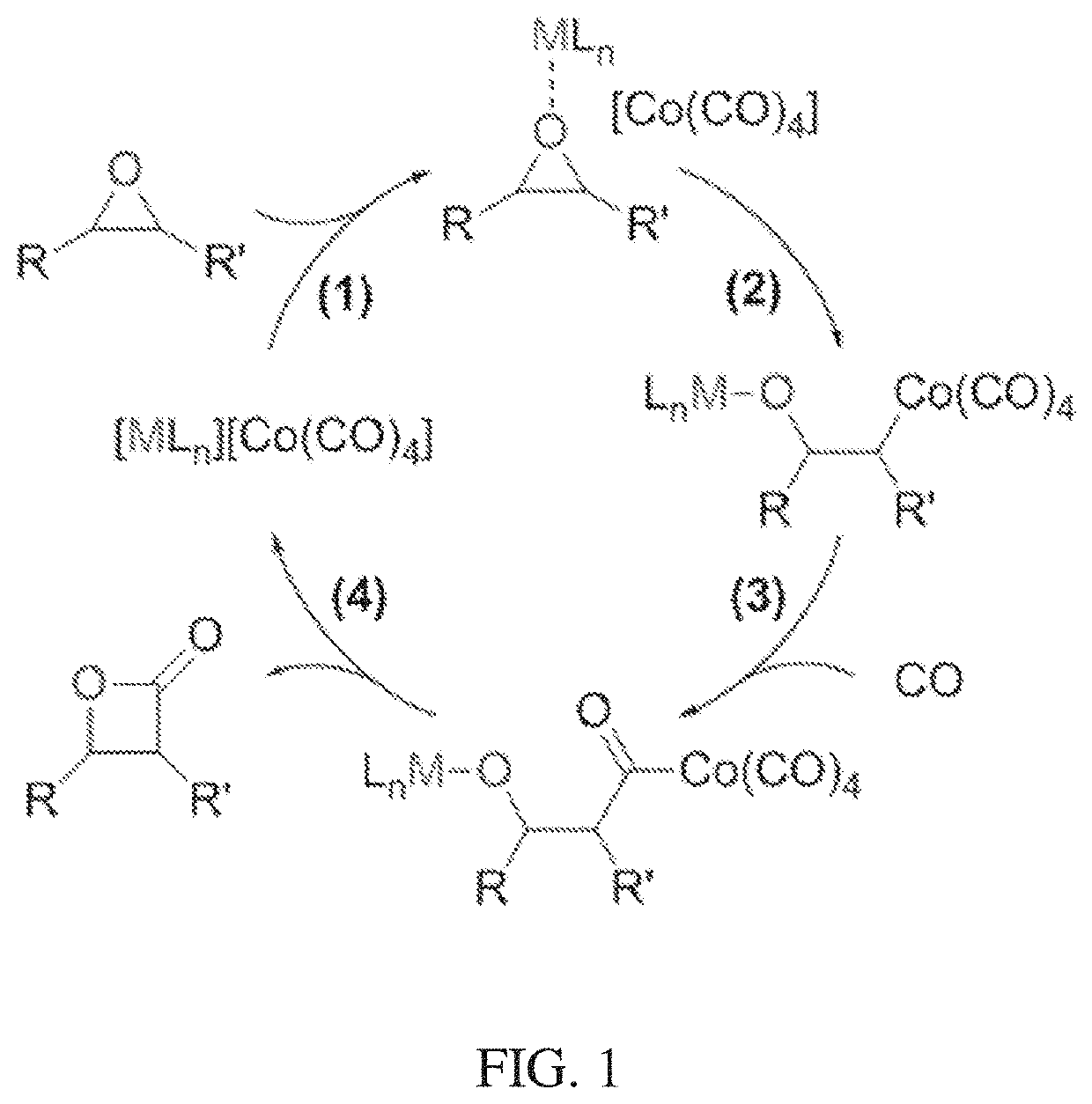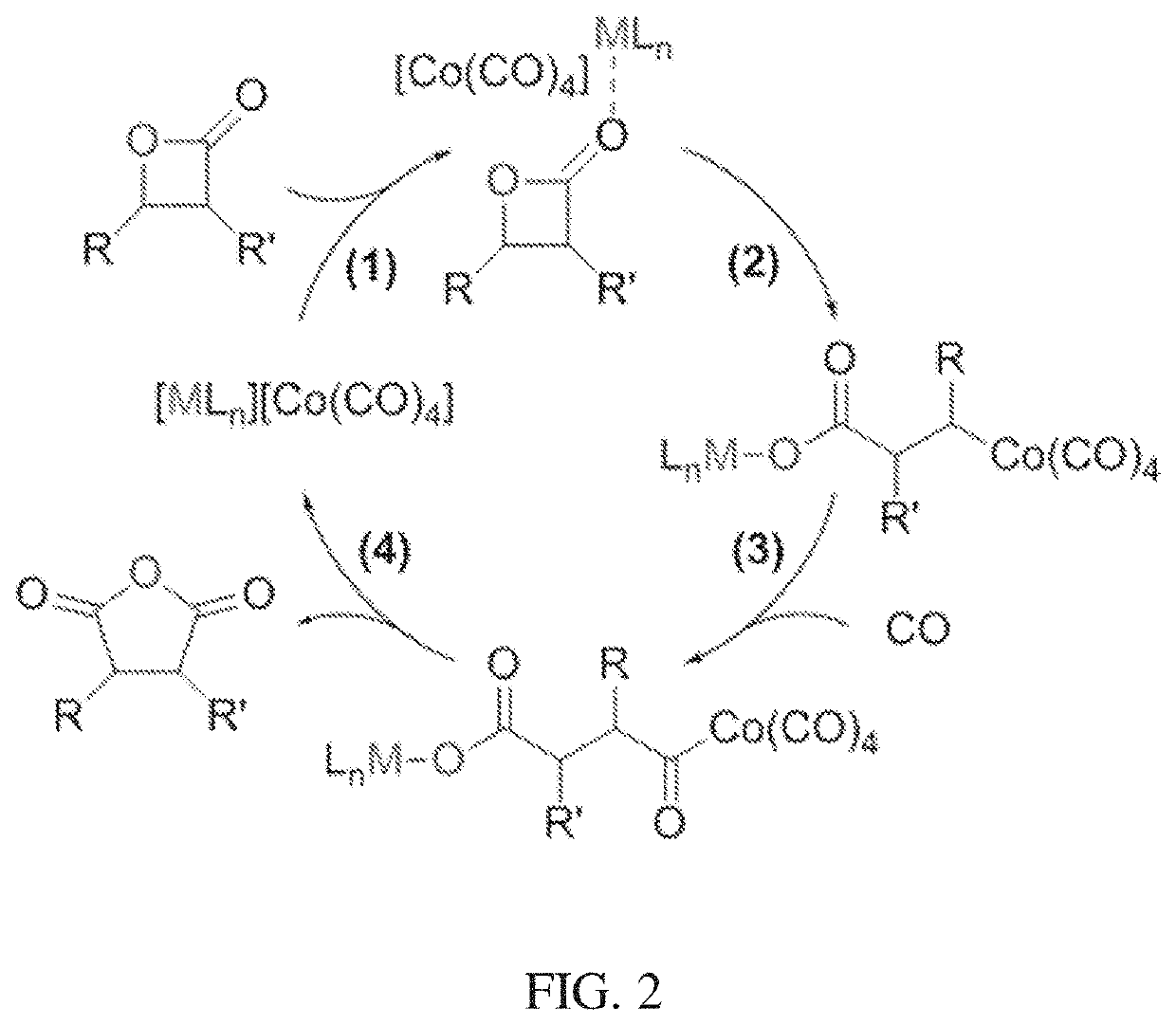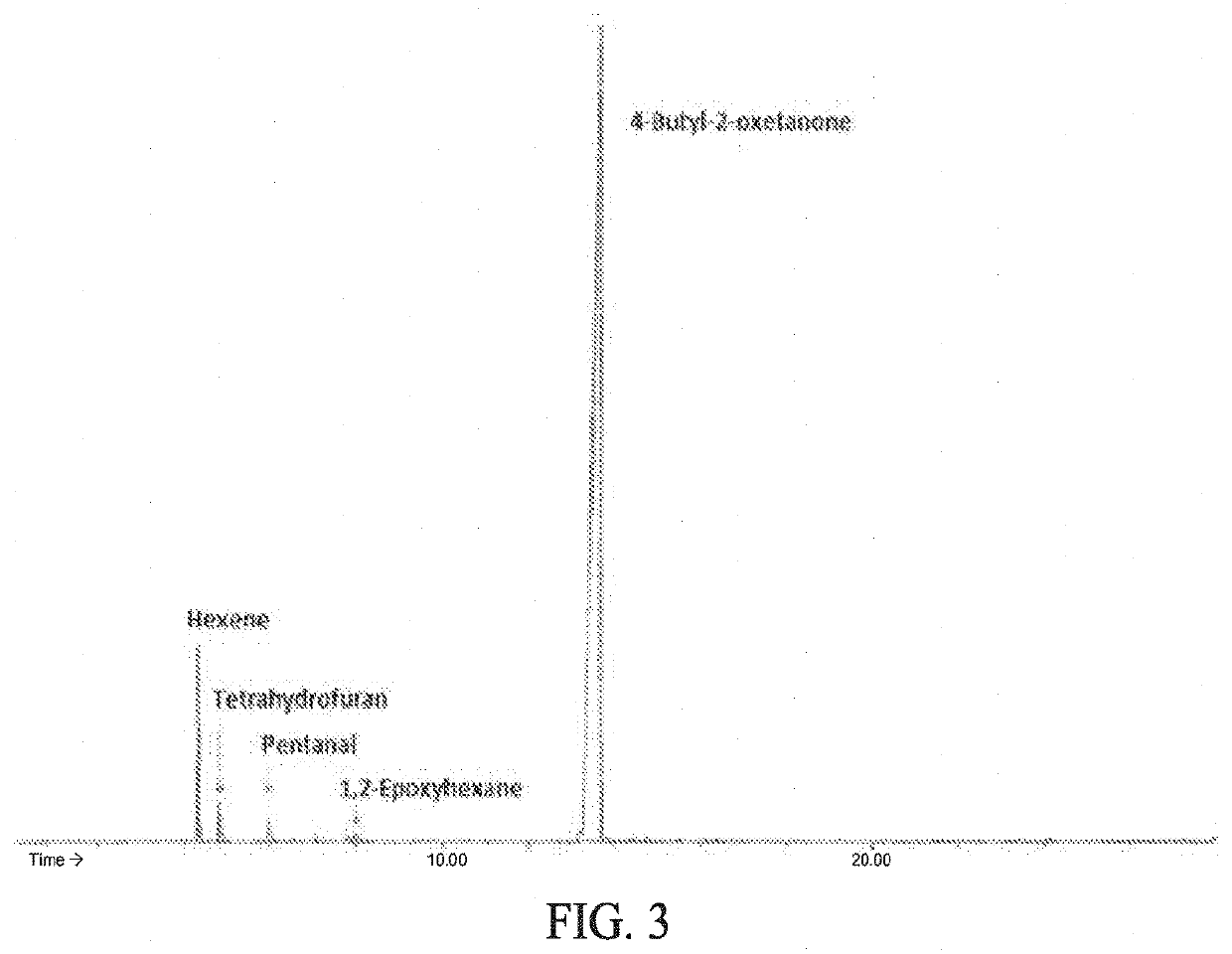Compositions and methods for selective carbonylation of heterocyclic compounds
- Summary
- Abstract
- Description
- Claims
- Application Information
AI Technical Summary
Benefits of technology
Problems solved by technology
Method used
Image
Examples
example 1
[0092]Post-synthetic ion exchange of Co(CO)4− into a Cr-MIL-101 metal organic framework was effectively carried out for the formation of a heterogeneous [Lewis acid]+[Co(CO)4]− system. The charge-balancing F− anions in the as-synthesized Cr-MIL-101 were directly coordinated to the Cr(III) sites of the framework. To replace these framework-bound anions with uncoordinated CO(CO)4−, anion exchange was performed in two discrete steps: (1) exchange of the bound F− with mobile Cl− using AlCl3 and (2) exchange of the mobile Cl− with Co(CO)4− using Na[Co(CO)4]. In the initial anion exchange, Al3+ shows greater affinity to F− than the framework Cr(III) sites, resulting in the abstraction of F− from the MOF. The consequent charge imbalance was compensated by the inclusion of Cl− into the framework.
[0093]This sequence of events was tracked by energy dispersive X-ray spectroscopy (EDX) analysis of the Cr-MIL-101 sample before (Cr-MIL-101-F) and after (Cr-MIL-101-Cl) soaking in a solution of AlC...
example 2
[0095]The catalytic activity of Cr-MIL-101-Co(CO)4 for the ring-expanding carbonylation of epoxides was tested and found to be commensurate with that of homogeneous catalysts. When using neat 1,2-epoxyhexane as a substrate, Cr-MIL-101-Co(CO)4 loaded at 0.5 cobalt mol % produced the corresponding β-lactone product with 86% yield in 5 h under 60 bar of CO at 60° C. (Table 1, entry 1). This led to a calculated site time yield (STY) of 34 h−1, which is comparable to the values reported for a series of homogeneous catalysts under similar reaction conditions. The solvent dependence of the carbonylation activity in Cr-MIL-101-Co(CO)4 also mimicked that of reported homogeneous systems. When a range of solvents was screened for optimal activity with Cr-MIL-101-Co(CO)4, reactions in weakly coordinating ethers such as 1,2-dimethoxyethane (DME) showed the highest activity. In other solvents, especially the more strongly coordinating solvents such as THF, the reactions proceeded at a much slower...
example 3
[0097]Example 3 demonstrates a process for forming the MOF, Cr-MIL-101. A typical synthesis involved a mixture of Cr(NO3)3.9H2O (800 mg, 2.00 mmol) and terephthalic acid (332 mg, 2.00 mmol) in 10.0 ml of water with 2.0 mmol of HF. The mixture was introduced to a Parr pressure vessel, which was placed in a convection oven held at 220° C. for 8 h. After natural cooling, the mixture was first passed through a large-pore fritted glass filter to remove the residual terephthalic acid. The filtrate was then passed through a fine-pore filter paper to collect the Cr-MIL-101 product. The obtained Cr-MIL-101 was further purified by two solvent treatments using ethanol and aqueous NH4F. The first solvent treatment involved introducing the solid sample to refluxing ethanol until no detection of colored impurities in the mother liquor. The sample was then subjected to an aqueous solution of 30 mM NH4F at 60° C. for 10 h (150 ml of solution / 1 g of sample). After natural cooling, Cr-MIL-101 was fil...
PUM
| Property | Measurement | Unit |
|---|---|---|
| Fraction | aaaaa | aaaaa |
Abstract
Description
Claims
Application Information
 Login to view more
Login to view more - R&D Engineer
- R&D Manager
- IP Professional
- Industry Leading Data Capabilities
- Powerful AI technology
- Patent DNA Extraction
Browse by: Latest US Patents, China's latest patents, Technical Efficacy Thesaurus, Application Domain, Technology Topic.
© 2024 PatSnap. All rights reserved.Legal|Privacy policy|Modern Slavery Act Transparency Statement|Sitemap



